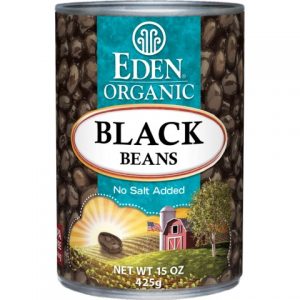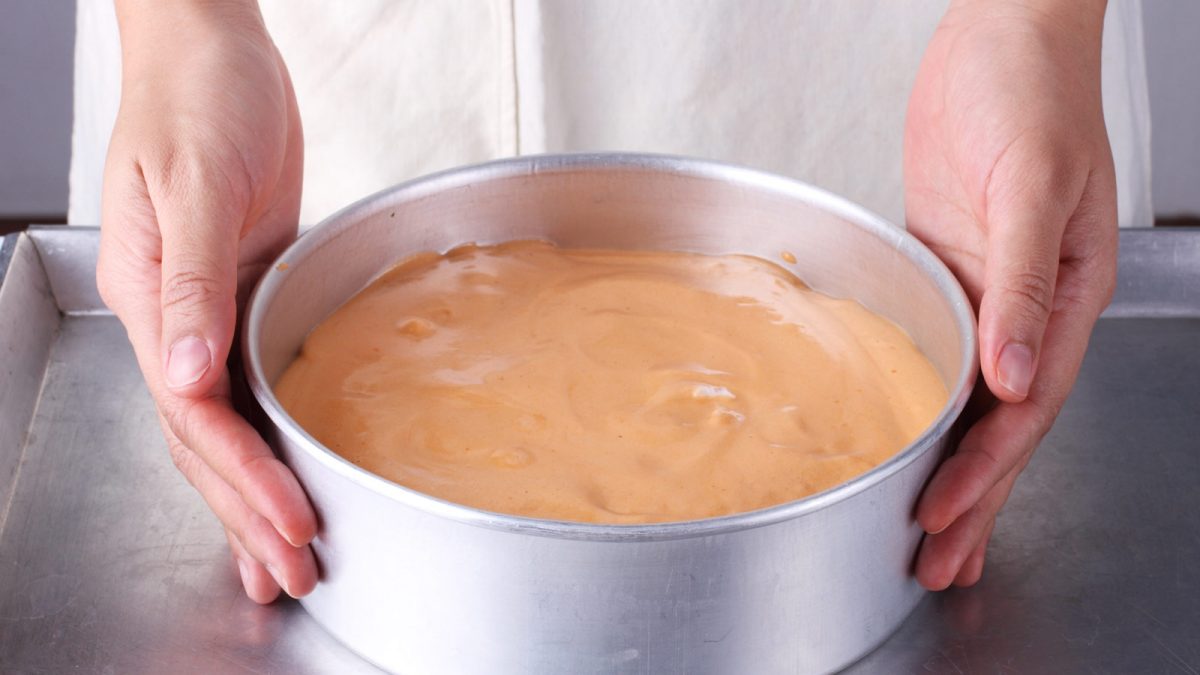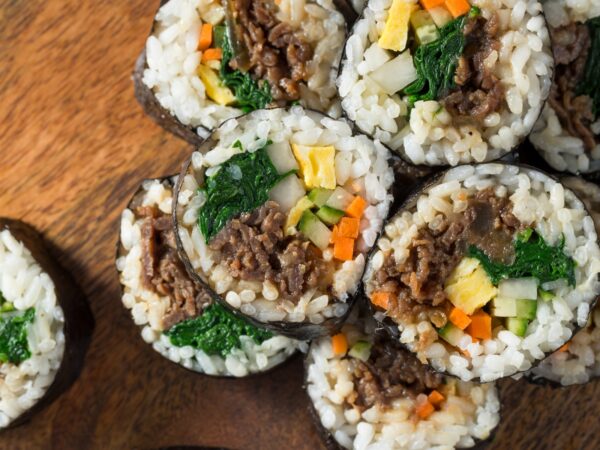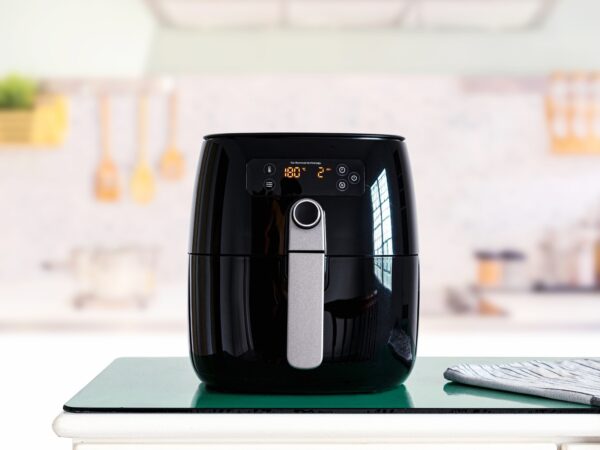Healthy Baking 101: Sugar Free, Gluten Free, Dairy Free Desserts
I have a confession to make: I eat brownies for breakfast.
But these aren’t just any brownies. They’re all-natural, antioxidant-rich, gluten-free, dairy-free, sugar-free brownies that are packed with protein, fiber and healthy fats. And did I mention that they are delicious?
Thanks to a new breed of healthy natural sweeteners low glycemic flours and slimming fats (yes, you read that right!), you can whip up delicious treats that pack serious nutrition too.
And today I’ll prove it to you. In this brief article you will discover:
- How to develop structure in your baked goods so they come out of the oven fluffy, tender and moist – without the use of gluten or any grains at all.
- How to achieve all the sweetness you desire using all-natural sugar substitutes that won’t spike your blood sugar or sour your health.
- Which healthy fats you can rely on to create buttery-richness in your baked goods – without the use of dairy or trans fats.
And finally, I’ll share the best fat substitutes and egg replacers for people with allergies and special dietary needs.
So let’s get started!
Healthy Flours for Healthy Baking: Better for Blood Sugar… & Gluten Free Too!
The first step in making healthier baked goods is to take a close look at the flour you use. Many bakers now choose whole grain flours over refined white flours. However, whole grain flours are still very high in carbohydrates and score high on the glycemic index.
And when it comes to your health, that’s a really bad thing. High glycemic foods cause your blood sugar to spike, raising insulin levels. Your blood sugar is directly linked to nearly every chronic disease including diabetes, cancer, heart disease, metabolic syndrome, obesity, macular degeneration, PCOS and many more.
And because insulin is the “fat-storage hormone”, eating high glycemic foods promote weight gain too.
If you want to avoid that “muffin top” then stay away from grain based flours.
And here’s another reason to avoid traditional flours: Most are made from wheat and contain gluten – an allergenic protein that causes health issues for many people.
What About Gluten-Free Flours and Baking Mixes?

Unfortunately, most gluten free flours use a combination of high glycemic ingredients like rice flour, potato starch, tapioca flour and sorghum flour. So while the gluten is missing, all the blood sugar-spiking effects are still there.
The good news is that there is a healthy, low glycemic, gluten free option you can use: Nut flours!
Nut flours are surprisingly versatile and lend buttery richness to all kinds of baked goods – from biscotti to cupcakes. And unlike grain-based flours, they are gluten free and low carb too. Here are the best nut flours to use in your baking:
- Almond Flour: This staple flour can be used to create everything from fluffy pancakes to crispy cookies. Opt for “blanched” almond flour which contains no skins. Unblanched almonds can add an unpleasant aftertaste when baked.
- Coconut Flour: Coconut flour might look light and fluffy, but it is actually a dense, fiber-rich flour. So take note: a little goes a long way. A good rule of thumb is to use one egg for each tablespoon of coconut flour in your recipes. Also, most recipes that call for coconut flour specify “sifted coconut flour”. One half cup coconut flour does not equal one half cup sifted coconut flour. If you don’t sift and then measure, your baked goods can end up dry and dense.
- Hazelnut and Pecan Flourr: These are richer nut flours that can be used in combination with almond flour to punch up the nutty flavor. They are great in pie crusts and cookies of all kinds.
Store nut flours in airtight containers away from light and heat, and preferably refrigerate. If you buy in bulk, freeze in airtight bags.
And nut flours aren’t the only low glycemic flour substitute you can use…
Beans: A “Secret” Ingredient for Springy, Moist Cakes

Yellow cupcakes made with cannellini beans… and a chocolate cake made with chickpeas?
You read that right. Beans are one of the “secret” ingredients you’ll find in many of our dessert recipes here at Healing Gourmet. Used properly, they provide light, springy structure, moisture and tenderness to baked goods. One word of caution: Baked goods made with beans can have a slight “beany” flavor for up to 12 hours after baking. This flavor will dissipate, so be patient. It’s worth the wait.
When using canned beans, opt for Eden Organic. In addition to being grown without the use of pesticides, Eden also packs their beans in BPA-free cans.
Along with canned beans, bean flours are another good option to have on hand. Bob’s Red Mill is a great brand, found at most food retailers across the U.S.
Because bean flours are dense, try adding bean flour for up to 25% of your gluten free flour mix. Here are the most popular bean flours and how to use them:
- Garbanzo Bean Flour: Use 7/8 cup to replace 1 cup of wheat flour in baked goods.
- Black Bean Flour: Use as part of your baking mix for chocolate cakes and brownies.
- White Bean Flour or Fava Bean Flour: Mild in taste, white bean flour or fava bean flour are suitable for use in most recipes calling for white flour. Substitute 1/4 of the white flour for bean flour.
Get creative with canned beans, bean flour and nut flours in your baking.
Now that we’ve explored the healthy “flour” options, it’s time to tackle the one ingredient with which we all have a love–hate relationship: Sugar.
Low Glycemic Sweeteners: Sweetening Power that Won’t Sour Your Health

Few of us have the willpower to resist a freshly-baked, meltingly delicious, chocolate chip cookie. The smell wafting out of the kitchen and the sight of their gooey goodness is just too enticing to pass up.
Unfortunately, most of us go through life indulging, only to suffer from post-dessert guilt and sugar-induced sluggishness. Or we deprive ourselves for the sake of our health and waistline.
But thanks to all natural, low glycemic sweeteners, desserts are back on the menu for the health-and-body conscious crowd – guilt free!
Unlike the chemical-laden, artificial sweeteners (like sucralose and aspartame, as well as neotame and ace-K) that we warn about and disallow at Healing Gourmet, these natural sweeteners provide a powerful punch of sweetness, without the toxic side effects.
And because they are low glycemic, they won’t spike your blood sugar the way sugar does.
Here’s the rundown on nature’s sweetest sugar substitutes that won’t sour your health:
- Erythritol: Considered the “almost sugar” by health experts and pastry chefs alike. Erythritol is a “sugar alcohol” with a glycemic index of zero and zero calories. It has no effect on blood sugar or insulin levels and is safe for diabetics. It can be used cup for cup in recipes just like sugar, and provides about 70% of the sweetness. You can help erythritol dissolve in recipes by grinding it in a blender or Magic Bullet. The powdered version also doubles as “powdered sugar”. Erythritol is derived from corn and should be avoided by those with a corn allergy. Look for Wholesome Sweeteners Zero or Wellness Bakeries Sinless Sweetener .
- Stevia: A super-sweet herb native to Paraguay that is up to 300X sweeter than sugar. Stevia is best used to increase the sweetness of a sugar alcohol, like erythritol, rather than the sole sweetener in a recipe. Pure stevia extract can be used sparingly – ¼ to ¾ tsp is the common range for most recipes.
- Xylitol: Like erythritol, xylitol is also a sugar alcohol. It has the same sweetness as sugar but with 40% fewer calories and a glycemic index of 11. Xylitol tends to have “cooling” or “minty” effect, which can be reduced by combining it with erythritol. Most xylitol is derived from corn, but Emerald Forest Erythritol is derived from birch. Xylitol has a number of health benefits ranging from reducing cavities and Candida, to boosting bone health.
- Luo Han Guo: Consider this the Asian cousin of stevia. A member of the pumpkin family, the extract of this gourd is also about 300 times sweeter than sugar and rich in antioxidants. Luo Han Guo (or just lo han) has been used medicinally in China for centuries for treating cough and sore throat. Like stevia, use sparingly in baked goods. Look for Jarro Luo Han Sweet or Lakanto – a combination of luo han and erythritol.
And What About Agave?

One of the most popular “alternative” sweeteners in recent years has become agave – a sweet syrup derived from the cactus that brings us tequila.
While agave nectar has a low glycemic index (Madhava’s GI is 32) and has been favored over sugar by the health-conscious crowd and raw foodists alike, agave is not be the safe sweetener it has been touted to be.
The main carbohydrates in agave are complex forms of fructose called fructosans. One of these is inulin, which is a healthy, non-digestible carbohydrate that stabilizes blood sugar and feeds the good bacteria in your gut. Inulin (not to be confused with the hormone insulin) also binds to fructose molecules, rendering them indigestible in the gut.
Inulin is great for your health. But unfortunately, this isn’t the end of the line for agave.
However, during processing, the chemical structure of agave is changed, breaking the inulin-fructose bonds. The result? Agave becomes the health equivalent of corn syrup.
In your recipes, you can easily make a substitution. For each ¼ cup of agave, substitute ¼ ripe organic pear pureed with 2.5 tsp. erythritol/stevia blend (like Steviva Baking Blend, Jay Robb’s Stevia Blend or ZSweet). You’ll still get some of the sticky goodness you crave, with a fraction of the health-harming fructose.
Healthy Fats for Baking: Get Slim By Eating Fat!
Now that we’ve got the sweetness and the structure aspects of baking covered, it’s time to tackle the fats.
Fats provide moisture and tender texture to baked goods. They give rich mouth feel to soufflés, the silky finesse to mousse and golden, flaky goodness to pie crust. But what they do in your body is even more important than what they do in the kitchen.
The fats you eat influence inflammation and metabolism. They affect how cells communicate with each other. They even affect how your genes express themselves! And when they are used at the wrong temperatures (above their flashpoint) they can cause oxidative damage that can mutate cells and encourage cancer.
But using the right fats, in their appropriate temperature range, is one of the best things you can do for your health. Healthy fats can help reduce inflammation, boost brainpower, discourage wrinkles and even flip your body’s fat-storage switch “off”. And these are the kind of fats we rely on at Healing Gourmet.
Stock your pantry with these heat stable, REAL fats for delicious baked goods with benefits:
- Coconut Oil: Coconut oil provides rich, buttery flavor to your favorite baked goods. Coconut oil is slow to oxidize and resistant to rancidity. It’s also rich in medium chain triglycerides (MCTs) and lauric acid which kill a myriad of bacteria, protozoa and fungus, including Candida albicans – the fungus responsible for yeast infections. Because MCTs are not metabolized by the liver, they’re used as energy – not stored as fat. Be sure to buy high quality mechanically expressed virgin coconut oil from a reputable company like Tropical Traditions, Jarrow, Barlean’s or Nutiva.
- Palm Shortening: Another great alternative to traditional shortenings (that contain trans fat) or butter, palm shortening can help you achieve light, tender, flakiness you desire in crusts and cookies. Like coconut oil, it is resistant to rancidity thanks to its high saturated fat content. Look for Spectrum Palm Shortening and Tropical Traditions Palm Shortening.
- Grass-Fed Butter: When it comes to baking, it’s hard to beat real, grass-fed butter. With its creamy flavor, high vitamin A content and versatility, butter can be used in almost any baked good. Be sure to choose organic, pastured/grass-fed butter that contains no hormones and the healthy fat CLA – Kerrygold grass-fed butter is the best!.
- Macadamia Nut Oil: These light and delicious oils can be used in any recipe that calls for liquid oil (ie- melted butter, canola oil). Plus, they’re rich in inflammation-fighting and belly-flattening monounsaturated fat. (Learn all about the benefits of macadamia nut oil here). Look for Olivado Macadamia Nut Oil.
- Pastured Lard, Grass-Fed Tallow & Free-Range Duck Fat: These highly stable fats add amazing flavor and texture to just about any baked good – from crusts to cupcakes. Keep in mind that tallow is the most neutral and best for “sweet” recipes. Savory recipes do well with all three. Oh, and if you think animal fats are unhealthy, read my article on why you should eat lard.
The fats to AVOID in your baking include hydrogenated oils/trans fats (like Crisco) as well as fats that are high in omega-6 including: vegetable oil, corn oil, canola oil, peanut oil, grapeseed oil, and soybean oil. (Learn about omega-6 fats and how they promote inflammation and weight gain here).
Fat Replacers
While there’s no need to be afraid of healthy fat, many folks want to lighten up a recipe in texture or calories. Fat replacers do the trick. Keep in mind, when you use fat replacers, you are adding sugar, so go easy!
- Pureed Prunes: Puree ½ cup pitted prunes and ¼ cup water in a blender or processor until smooth (makes about 2/3 cup). Then use in chocolate-based or spiced baked goods like gingerbread. To replace ½ cup butter, use 1/3 cup prune puree. The Tradeoff: You’ll save almost 700 calories and 92 grams of fat, but add 21 grams of sugar to your recipe.
- Pureed Beets: Try using puréed cooked beets – measure for measure – as a substitute for the fat in chocolate baked goods like brownies and chocolate cake. For example, if the recipe calls for ½ cup substitute ½ cup of pureed beets. The Tradeoff: You’ll save 800 calories and 92 grams of fat, but add 9 grams of sugar to your recipe. BONUS: You’ll also get a healthy dose of fiber and the cancer-fighting nutrient betacyanin. (Try our Chocolate Beet Cake recipe)
- Applesauce: Simply substitute the same amount of applesauce – cup for cup – in place of butter or oil. For example, if the recipe calls for one stick of butter (½ cup) substitute ½ cup of unsweetened applesauce. The Tradeoff: You’ll save 700 calories and 92 grams of fat, but add 12.5 grams of sugar to your recipe.
Egg Substitutes: Bind Your Desserts and Make them Rise Allergen-Free
Eggs are a near-perfect food. But not if you have an egg allergy!
Unfortunately, commercial egg replacers (like Ener-G) contain soy protein and wheat gluten- two highly processed, allergenic ingredients that cause digestive discomfort for many people.
But there are natural, unprocessed allergen-free ingredients that can be used to replace eggs – and they’re probably in your pantry right now!
Before attempting an egg substitute, you need to determine the function eggs have in your recipe. Eggs can bind, leaven or moisturize.
If a recipe contains only one egg, but a fair amount of baking powder or baking soda, then the egg is serving as the binder. This is an easy replacement that can be achieved with almost any of the substitutes listed below.
But if a recipe contains many eggs – like a soufflé – eggs are acting as the leavener and the binder. And the substitution will be a flop.
As a general rule, the fewer eggs a recipe calls for, the easier they will be to substitute.
- 2 tbsp cornstarch = 1 egg
- 2 Tbsp. arrowroot flour = 1 egg
- 2 Tbsp. potato starch = 1 egg
- 1 mashed banana = 1 egg
- 1 Tbsp. milled flax seed + 3 Tbsp. water (set to gel) = 1 egg
- ¼ cup unsweetened apple sauce = 1 egg
- ¼ cup organic plain yogurt, whipped = 1 egg
- 2 Tbsp. water + 1 Tbsp. oil + 1 tsp. baking powder. Mix well. = 1 egg
- 1 tbsp agar agar powder + 1 tbsp water. Whip together. Chill. Whip it again. = 1 egg white
- ¼ cup cooked pumpkin or winter squash = 1 egg
- 1/4 tsp. xanthan gum + 1/4 cup of water. Let stand, then whip. 1 egg white
NOTE: For the fruit purees, add an additional ½ tsp. baking powder to reduce density.
Healthy baking, like any art form, takes practice and a little bit of patience. Be prepared to have some flops at first. But once you get the hang of using these healthy, all-natural ingredients, you’ll delight over brownies for breakfast too!




Hi, there, great article which I enjoyed and it is helpful. However, I was surprised to NOT see aquafaba listed as a great egg substitute which I have used with great success. 3 tablespoons aquafaba (chick pea water from a can of chick peas) = 1 egg. It is GREAT.